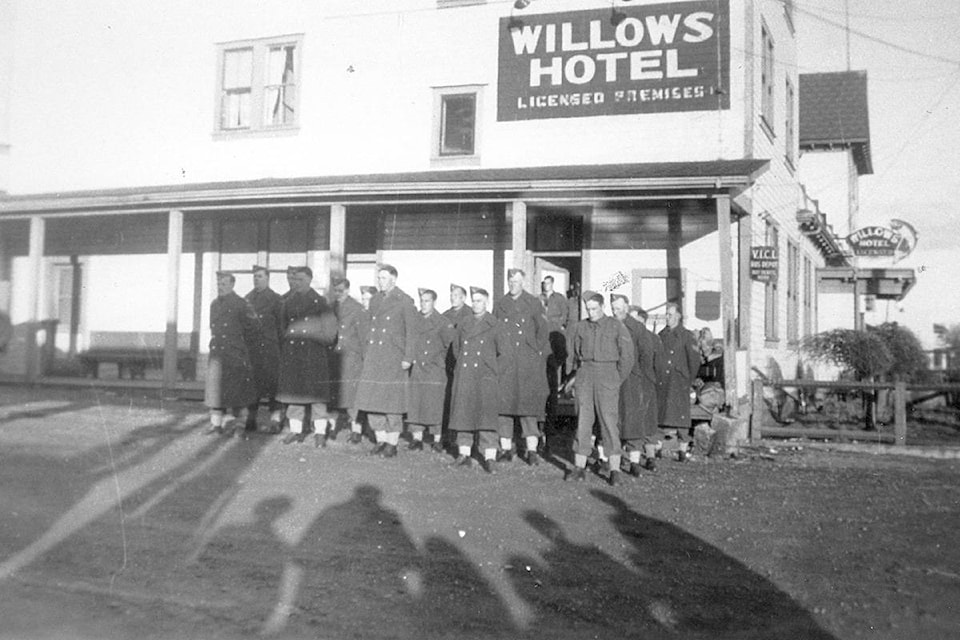By Beth Boyce
Many of us remember our lessons from school about the events and impacts of the First and Second World Wars.
We are taught about the famous battles that took place in Europe and Asia, and the hardships suffered by those serving overseas. We remember every November the lasting legacy that these Wars have had upon our culture and our history. One aspect of these wars that is not often discussed is what was happening right here on the North end of Vancouver Island. The west coast may not have been at the centre of the fighting but it was certainly an active front, especially during the Second World War.
Our coastal defense involved air, land and sea. There were countless air force bases and landing strips constructed in the bush, look out stations to watch for enemy planes, and Air Raid Protection (ARP) units active all over the coast. The ARP was on the lookout for enemy planes and balloon bombs, which were deployed by the Japanese to start forest fires and cause confusion.
The Fisherman’s Reserve, or Gumboot Navy as it was commonly called, patrolled the entire coast on the lookout for Japanese submarines. Local fishermen were the best men for this job as they knew the ins and outs of the coastline and its dangerous waters, much of which was still uncharted. They were armed with outdated weaponry that would have been useless against a submarine but they went out in all weather to report sightings of enemy activity, even on days when it was too rough for the regular Navy.
Yorke Island, near Sayward and Kelsey Bay, was converted into an active fort. Its task was to monitor sea traffic and defend the route to the large coastal centres like Victoria, Nanaimo and Vancouver against enemy ships and submarines. Even today all traffic heading through the Inside Passage has to pass closely by Yorke Island, which has a commanding view in all directions. After the bombing of Pearl Harbour, larger guns and searchlights were added to the fort to aid in this work of defending the southern coast.
The Pacific Coast Militia Rangers were ready at all times to defend the province if any Japanese succeeded in landing on the coast. In addition, Conscientious Objectors who wanted to serve their country in the Alternative Service were kept busy building roads and tree planting on the North Island. The aftermath of the Bloedel Fire of 1938 kept them very busy in this area. This region was home to a large number of essential service industries including Logging, Fishing, Mining and Agriculture, although there was a shortage of men to do the work.
The final aspect of the coastal defence during the war is something we have heard more about in recent years, and that is the removal and incarceration of Canadians of Japanese descent. Thousands of people were ‘evacuated’ from the coast and held in camps until long after the war was over while all of their property and possessions were sold without their consent. Two prominent local families, the Matsunagas and the Atagis, had very different experiences of this period and its aftermath; their stories are being shared as part of the new exhibit soon to be on display at the Museum.
To learn more about the war in this region come see the upcoming temporary exhibit, North Vancouver Island at War! The exhibit opens on June 16, and runs until Nov. 15 at the Museum at Campbell River.
